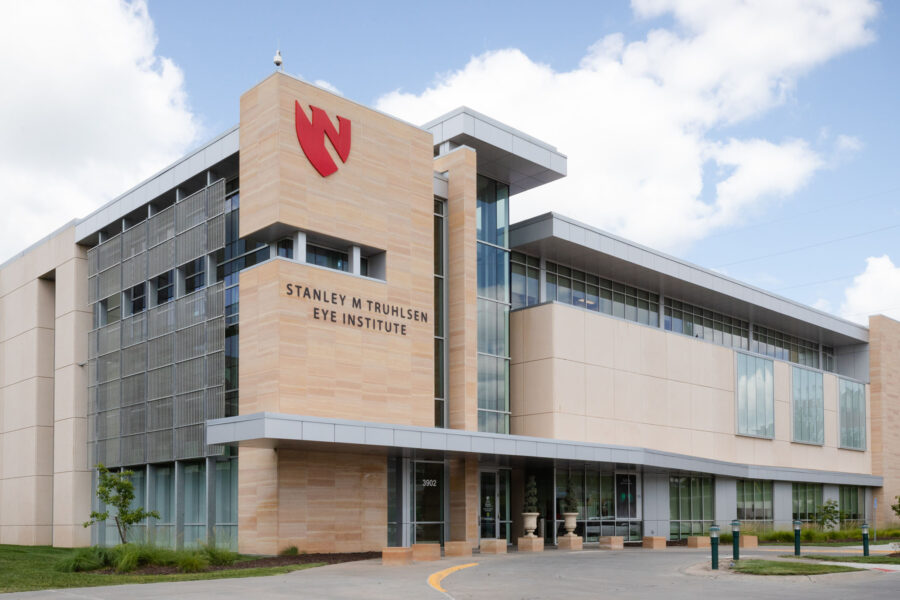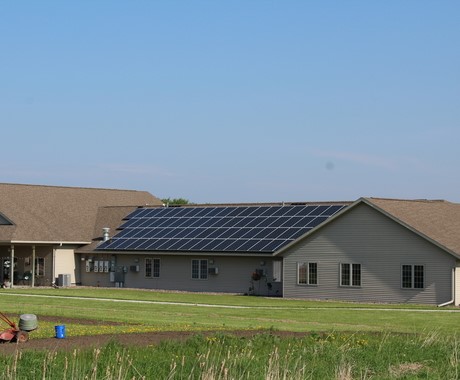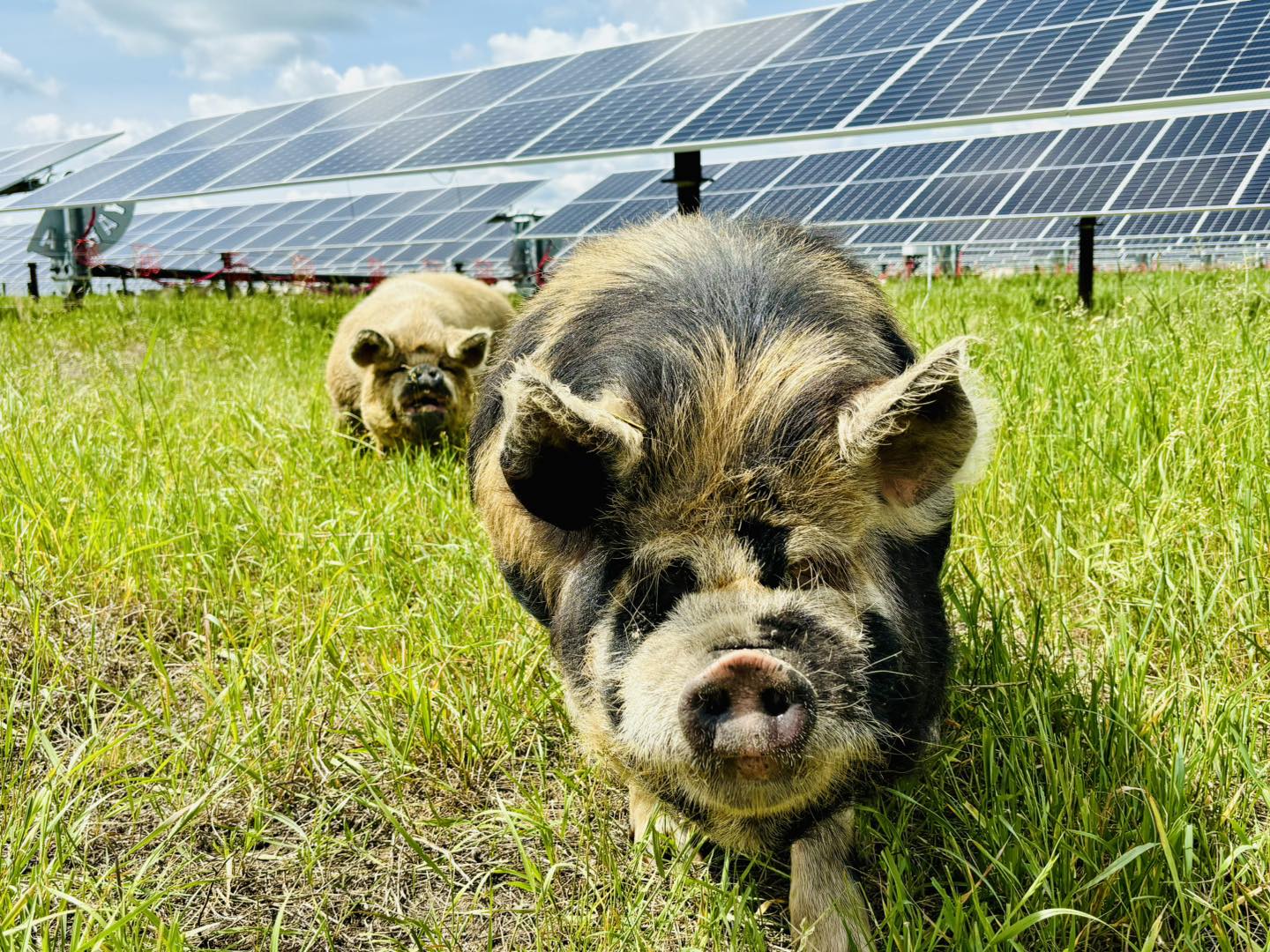
Nebraska Medical Center Adds 500 kW Solar Array
The University of Nebraska Medical Center added rooftop solar to the Michael F. Sorrell Center for Health Science Education, the Stanley M. Truhlsen Eye Institute, and the Harold M. and Beverly Maurer Center for Public Health. The solar array will provide reliable, backup power for the hospital and help provide low cost electricity for the buildings.

Nebraska Center for Rural Affairs Receives $62 Million to Provide Financial Assistance for Solar in Low-Income Areas
Nebraska's Center for Rural Affairs received $62 million to launch a new era of solar use in the state. These funds will install solar arrays for 9,000 disadvantaged Nebraskans and save them at least 20% in monthly utilities costs.

U.S. Army Corps of Engineers Celebrates Solar Arrays
The U.S. Army Corps of Engineers spotlighted some of the unique features at it's Omaha District branch. This included highlighting some rooftop solar panels that have provided low cost electricity to the building.

Nebraskans Receive Funds for Solar from the Rural Energy for America Program
The Rural Energy for America Program provided funds for a variety of solar projects throughout Nebraska. This includes a solar array for H&W Builders and solar stock wells at multiple farms.

Former Landfill in Douglas County Turns into Solar Project
A new solar project is being built on a former landfill in Douglas County. Landfills have limited uses after they’re covered, and a new solar project will help generate electricity on the otherwise unusable land. A $3.46 million grant is helping cover some of the project’s costs.

Solar Powered Pivot Generates Electricity and Income on the Farm
Farmers in Nebraska are using solar panels to provide electricity for irrigation systems that help keep corn watered efficiently. One farmer said, “The beauty of it is when the pivot's not running we're selling energy back into the grid so it's great for income generation for landowner to help pay for the project.”

Nebraska Solar Schools Awarded $31,250 to Give Solar Energy Kits to 100 Schools
Nebraska Solar Schools received $31,250 to provide resources for K-12 teachers to facilitate integration of more solar energy education into their classrooms or after-school programs. The cities include Omaha/ Fort Calhoun, Superior, York, and Lexington.

Solar Project Provides Affordable Power to Wahoo Public Library
A 2 MW solar project will provide electricity to the Wahoo Public Library. The project will provide affordable power to the library, reducing costs for the library and taxpayers.

Madison Receives $3.6 Million to Build 2 MW Solar Project
Madison received a $3.6 million grant from the Powering Affordable Clean Energy Program. The grant will lower energy bills and create jobs for U.S. farmers, ranchers, and producers. This project will provide 7% of the city’s electricity needs.

More Homeowners in Omaha are Turning to Solar for Low Cost Electricity
Over 1,000 households in Omaha have applied to install rooftop solar panels, up from just 54 in 2020. The OPPD says, "There’s a financial aspect to it. You will buy less power from OPPD, you produce your own power. Over time you could pay off the system that way.”

Farms and Ranches Begin to Incorporate Small Solar Projects
Many farms around Nebraska are incorporating small solar projects to provide low cost electricity to farmers. One farmer highlighted $3,500 in monthly savings on their utility bill.

Omaha’s Zoo and Aquarium Installs Solar
Omaha’s Henry Doorly Zoo added solar panels to help meet the zoo’s electricity needs. The solar array will generate 116,000 kWh which will provide one-third of the power for the zoo’s theater.

Omaha Church Saves $1,500 Thanks to Rooftop Solar Array
The Sacred Heart Church installed 36 rooftop solar panels, satisfying 60% of the parish office's electricity needs. This will save the parish over $1,500 per year.

Central Community College Installs 17 kW Solar Array
Central Community College Installed a 17 kW Solar Array to help reduce electricity costs and help prepare students for a future where clean energy plays a large role. The solar project will play a large part in the college getting over 2/3 of it's energy from clean sources.

Nebraska Pork Producer Uses Solar to Improve Operations
A pork producer in Northeast Nebraska installed a 300 panel solar array that can meet most of his electricity needs for up to 25 years. He says thanks to the Investment Tax Credit, the project has a payback period of 7 years.

Winnebago Tribe Uses Solar to Reduce Costs for Police and Fire Department by 30%
The Winnebago tribe receive a $76,347 grant to install a 23 kW solar array on the Winnebago Police and Fire building. The array has reduced the building's energy use by 30% and led to more than 30% in savings.

CS Precision Manufacturing Runs on Solar Plus Storage Microgrid
CS Precision Manufacturing in Gering added a solar plus storage microgrid. The solar plus storage combo will bring financial benefits to the manufacturer and offer energy independence for the manufacturing site.

Nebraska Rancher’s Solar System Offers Power for Grid, Shade for Cattle
A Nebraska entrepreneur received a $200,000 federal grant to build a solar array that can double as a shade for cattle feedlots. These solar arrays will significantly reduce the high electricity bills that cattle farmers face.

Nebraska Animal Science Building Reduce Costs with Solar
The Animal Science Building at the University of Nebraska-Lincoln is using a rooftop solar array to reduce the amount of energy it needs. This leads to significant savings for the building.

Valmont Uses 1 MW Solar Array to Power its Valley Manufacturing Site
Valmont Industries, a global provider of engineered products and services for infrastructure development, is using a 1 MW solar array to power its manufacturing site in Valley. This project will provide the Valley campus with 6% of its electricity needs.

Duchesne Academy of the Sacred Heart in Omaha Uses Rooftop Solar for Power and Education
The Duchesne Academy of the Sacred Heart added 30 rooftop solar panels. “There are so many elements that we can tie in educationally from the dollars and cents of it that we could look at business savings and see that cost outlook over time,” said the school’s STEAM integration director. Also, the school’s science department uses data from the solar array to teach about science and math.

